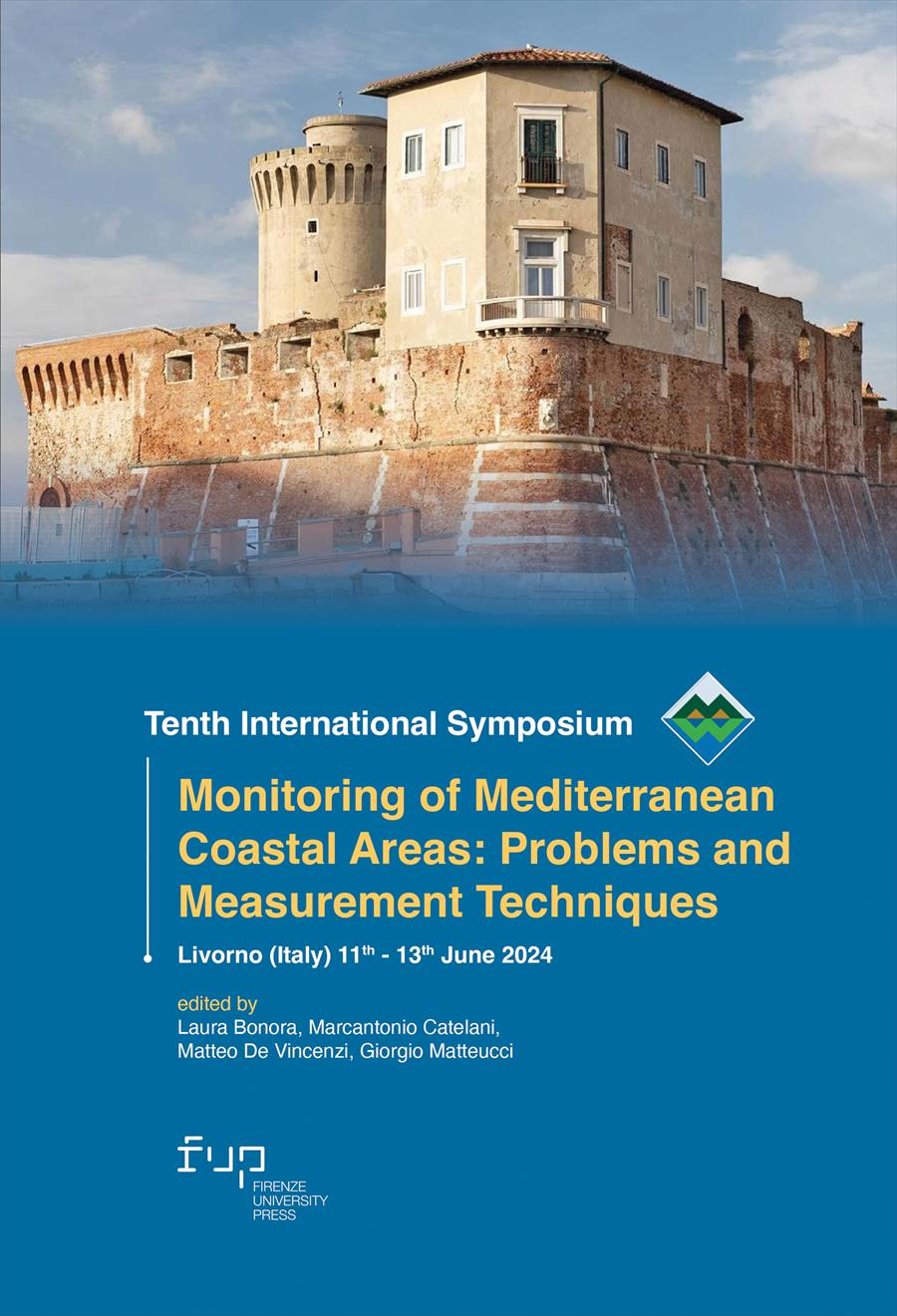- Tenth International Symposium "Monitoring of Mediterranean Coastal Areas: Problems and Measurement Techniques"
- Edited by Laura Bonora, Marcantonio Catelani, Matteo De Vincenzi, Giorgio Matteucci
Assessment of the quality of marine bathing waters using different methods of percentile calculation
- Diana Mance
- Zrinka Vrček
- Arijana Cenov
- Marin Glad
- Davor Mance
- Darija Vukic Lušic
- © 2024 Author(s) |
- CC BY-NC-SA 4.0
- DOI: 10.36253/979-12-215-0556-6.82
Escherichia coli (E. coli) and intestinal enterococci (ENT) are the indicator bacteria used to test the microbiological quality of bathing water. In Croatia, the quality of bathing water is assessed by parametric method i.e. on the basis of the 90th and 95th percentile values which are calculated using the corresponding arithmetic mean and standard deviation of the logarithmic bacterial concentrations. There are also non-parametric methods for determining the value of a particular percentile, and one of them is the so-called Hazen method. In this work, we study how the different methods of percentile calculation affect the assessment of coastal bathing water quality. We have chosen a "problematic" location with frequently elevated bacterial concentrations as a test site.The results show that in the case of E. coli, the 95th percentile values calculated using the Hazen method are significantly lower than those calculated using the parametric method (Wilcoxon rank test, p < 0.05), while for ENT there was no statistically significant difference. For case of annual assessment, the difference in coastal bathing water quality was statistically significant for both ENT and E. coli (McNemar test, p=0.004 and p=0.02 respectively). In the final classification, the difference in coastal bathing waters quality was statistically significant only in the case of E. coli (McNemar test, p=0.025).
- Keywords:
- microbiology,
- bathing water quality,
- statistical methods,
- Hazen percentile method,
University of Rijeka, Croatia - ORCID: 0000-0001-6746-8693
University of Rijeka, Croatia
University of Rijeka, Croatia - ORCID: 0000-0002-6731-7868
University of Rijeka, Croatia - ORCID: 0000-0001-9567-3897
University of Rijeka, Croatia - ORCID: 0000-0002-6206-2464
University of Rijeka, Croatia - ORCID: 0000-0003-0534-2547
- Mance D., Mance D., Vukić Lušić D. (2018) - Marine pollution differentiation with stable isotopes of groundwater, Sci. J. Mar. Res. 32 (1), 80 – 87. DOI: 10.31217/p.32.1.10
- Mance D., Mance D., Vukić Lušić D. (2021) - Environmental and anthropogenic factors affecting coastal bathing water quality: preliminary study for Primorje-Gorski Kotar County (Croatia), Sci. J. Mar. Res. 35 (1), 57 – 68. DOI: 10.31217/p.35.1.7
- Mance D., Mance D., Vukić Lušić D. (2022) - Managing water commons using mediator variables to bridge the gap between environmental factors and anthropogenic pollution indicators, Ninth International Symposium “Monitoring of Mediterranean Coastal Areas: Problems and Measurement Techniques”, Livorno, Italy, 14–16 June 2022, pp. 515–524. DOI: 10.36253/979-12-215-0030-1.47
- Directive 2006/7/EC of the European Parliament and of the Council of 15 February 2006 concerning the management of bathing water quality and repealing Directive 76/160/EEC. (2006) Off. J. Eur. Union 2006, L 64, 37–51.
- Official Gazette 73/08 (2008) - Regulation on sea bathing water quality. Croatian Ministry of Environment and Energy. https://narodne-novine.nn.hr/clanci/sluzbeni/2008_06_73_2426.html (in Croatian)
- Ministry of the Environment, New Zealand (2003) - Microbiological water quality guidelines for marine and freshwater recreational areas, https://environment.govt.nz/publications/microbiological-water-quality-guidelines-for-marine-and-freshwater-recreational-areas/
- Jozić S., Vukić Lušić D., Ordulj M., Frlan E., Cenov A., Diković S., Kauzlarić V., Fiorido Đurković L., Stilinović Totić J., Ivšinović D., Eleršek N., Vucić A., Peroš-Pucar D., Unić Klarin B., Bujas L., Puljak T., Mamić M., Grilec D., Jadrušić M., Šolić M. (2018) - Performance characteristics of the temperature-modified ISO 9308-1 method for the enumeration of Escherichia coli in marine and inland bathing waters, Marine Pollution Bulletin, 135, 150 – 158. DOI: 10.1016/j.marpolbul.2018.07.002
- ISO 7899-2 (2000) - Water quality – Detection and enumeration of intestinal enterococci – Part 2: Membrane filtration method (ISO 7899-2:2000; EN ISO 7899-2:2000). International Organization for Standardization, Geneva.
- Ministry of the Environment, New Zealand (2013) - Hazen percentile calculator, https://environment.govt.nz/publications/bathewatch-user-guide/hazen-percentile-calculator/
Chapter Information
Chapter Title
Assessment of the quality of marine bathing waters using different methods of percentile calculation
Authors
Diana Mance, Zrinka Vrček, Arijana Cenov, Marin Glad, Davor Mance, Darija Vukic Lušic
Language
English
DOI
10.36253/979-12-215-0556-6.82
Peer Reviewed
Publication Year
2024
Copyright Information
© 2024 Author(s)
Content License
Metadata License
Bibliographic Information
Book Title
Tenth International Symposium "Monitoring of Mediterranean Coastal Areas: Problems and Measurement Techniques"
Book Subtitle
Livorno (Italy) 11th-13th June 2024
Editors
Laura Bonora, Marcantonio Catelani, Matteo De Vincenzi, Giorgio Matteucci
Peer Reviewed
Publication Year
2024
Copyright Information
© 2024 Author(s)
Content License
Metadata License
Publisher Name
Firenze University Press
DOI
10.36253/979-12-215-0556-6
eISBN (pdf)
979-12-215-0556-6
eISBN (xml)
979-12-215-0557-3
Series Title
Monitoring of Mediterranean Coastal Areas: Problems and Measurement Techniques
Series E-ISSN
2975-0288
